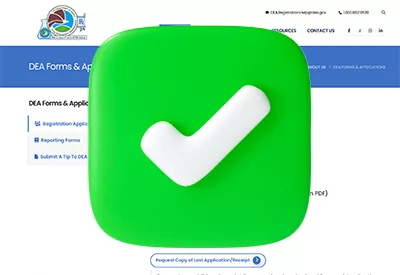Motivational Interviewing

Steve Martino, PhD is Professor of Psychiatry, Yale University School of Medicine; Chief, Psychology Service, VA Connecticut Healthcare System, West Haven, CT.
Dr. Martino has no financial relationships with companies related to this material.
CATR: Please introduce yourself.
Dr. Martino: I’m a professor of psychiatry at the Yale University School of Medicine and chief of the psychology service at VA Connecticut, where I’ve been a long-term practitioner, trainer, and researcher of motivational interviewing (MI). I use it. I train it. I study it. I think about it much of the time. It’s become a part of who I am.
CATR: What is MI?
Dr. Martino: It’s a psychotherapeutic approach developed by Bill Miller and Steve Rollnick. They define MI as a collaborative conversation style that strengthens a person’s motivation and commitment to change. It involves exploring and resolving ambivalence, allowing individuals to articulate their own reasons for change. The approach is person-centered, focusing on the individual’s perspective and fostering an environment where the person feels empowered to make decisions. By engaging in this dialogue, practitioners help people identify their goals, and often the discrepancies between their current behaviors and these desired outcomes, with the aim of facilitating a person’s deeper commitment to change.
CATR: Can you elaborate on what you mean by “a person’s motivation and commitment to change”?
Dr. Martino: In MI, we don’t presume to know what people’s motivations might be, but we assume that everyone has reasons within them that favor changing something causing them problems. Our role as providers is to discover what those reasons might be. We must adopt a curious stance: Where does this person stand on a particular issue that warrants change? Each person will have their own reasons to change (we refer to this as change talk) and reasons why they haven’t been able to change (we call this sustain talk). It’s the mixture of change talk and sustain talk that constitutes ambivalence.
CATR: So, MI involves exploring the balance of change talk and sustain talk?
Dr. Martino: Exactly. By starting out with curiosity, by drawing out someone’s story, we allow them to articulate their ambivalence and gauge their motivation. Some individuals will express more sustain talk than change talk, indicating less motivation for change. Understanding this is crucial. Some people feel stuck, pulled in two directions. Others may want to change a behavior but feel held back in some way. Our goal is to unearth these barriers and guide people toward a point where they can commit to a change process and plan. Understanding people’s motivations to change is essential for approaching change from their perspective.
CATR: Can you explain what you mean by ambivalence a bit more?
Dr. Martino: Ambivalence is the feeling of being pulled in multiple directions at once. Addiction is a good example. For many, the downsides of addiction are clear, whether it’s affecting job prospects, their family, or their relationships. But many individuals experience ambivalence about changing their addictive behavior because it also serves some adaptive function. Perhaps substance use has helped with anxiety or depression. Maybe it keeps them out of withdrawal, relieves cravings, or delays having to confront the consequences of their addiction. MI navigates this ambivalence and guides individuals toward recognizing their potential for change while addressing barriers that hinder their progress.
CATR: Why is MI well suited for addiction treatment?
Dr. Martino: MI has its origins in addiction treatment. It shifts away from some of the more traditional confrontational treatment approaches and offers a more humanistic perspective. This is crucial because addiction is so stigmatized. People worry about feeling shamed by providers. Many have had bad treatment experiences—and it makes a difference if we allow them to feel heard and understood without judgment. That is what MI does. It meets individuals where they’re at. It emphasizes acceptance and, because we are trying to assess people’s own experience of addiction, it strives to be nonjudgmental. Addiction is a chronic process that often requires continuous management, with motivation fluctuating over time. MI can be a valuable tool, especially when clients struggle with return to use and feelings of demoralization. In such moments, emphasizing MI can help clients re-engage and refocus before getting back to more action-oriented strategies.
“Incorporate the core principles of motivational interviewing into practice before getting into lots of specific techniques. Remember that your clients are the experts of their lives, not you. Set aside your expert persona and be present, curious about who they are, what they’re experiencing, and how they discuss their substance use.”
Steve Martino, PhD
CATR: I’ve heard MI referred to as a humanistic approach to psychotherapy.
Dr. Martino: MI is very much grounded in a humanistic psychological approach, particularly the writings of Carl Rogers (Miller WR and Moyers TB, J Consult Clin Psychol 2017;85(8):757–766). It leverages empathy, support, and genuineness in interpersonal relationships. But MI also incorporates a technical approach to guiding conversations, specifically to elicit change talk. The belief in the possibility of change within all individuals is crucial, as is the practice of listening carefully and asking specific questions. So really, MI combines a humanistic stance with a directional guiding style.
CATR: How does this approach differ from other forms of psychotherapy?
Dr. Martino: That’s an interesting question. Most aspects of MI are not unique to MI. For example, just like many other approaches to psychotherapy, MI emphasizes the importance of understanding a person’s story of addiction, being empathic, using reflective statements to help clients feel understood, being relatable and genuine, and recognizing strengths in others. These elements aren’t exclusive to MI, but MI emphasizes them as fundamental. What makes MI unique is how it combines these elements with a technical process that recognizes how people discuss change, drawing that out and allowing it to build throughout the session, guiding individuals to talk themselves into change.
CATR: And MI can be combined with other forms of psychotherapy as well.
Dr. Martino: Absolutely. I like to think of MI as a prelude to treatment. It engages clients at the entry point of treatment to strengthen their commitment. We focus on the present moment, helping clients to articulate their thoughts and feelings about how they are feeling and thinking about the issue as it currently stands. The process of MI is all about mutual discovery within a respectful and strength-based interaction. So, it’s great at building rapport, which is crucial at the start of treatment. From there, MI helps lead clients to decide for themselves that it is time to change and commit to that change. Once we get there, we can collaborate on how to proceed, and this is where I like to bring in other approaches like cognitive behavioral therapy, acceptance and commitment therapy, Alcoholics Anonymous, or family therapy. MI integrates seamlessly with these approaches and can be brought back into the therapeutic work when a person’s motivation waxes and wanes.
CATR: What about medication?
Dr. Martino: There’s no reason that MI cannot be combined with medication. In fact, MI can be used to help with medication adherence if that is an issue. To the extent that medications promote clear thinking or emotional regulation, the use of medication might help a person make better use of MI while considering their motivations for change.
CATR: What is the evidence behind MI?
Dr. Martino: Trials began in the 1990s and focused on efficacy in controlled settings. Those were followed by pragmatic effectiveness trials, and then implementation trials addressing factors that might support or impede MI practice in different settings. Broadly, we can say that MI is effective. For addiction, the strongest evidence in addiction is with alcohol use disorder. Specifically, MI has been shown to reduce drinking frequency and quantity and other forms of substance use among people with substance use disorders (Frost H et al, PLoS One 2018;13(10):e0204890). There is evidence that it might be helpful in smoking cessation as well, and some evidence that psychosocial interventions, including MI, can reduce treatment dropout for people with stimulant use disorders (Lindson-Hawley N et al, Cochrane Database Syst Rev 2019;7(7):CD006936; Minozzi S et al, Cochrane Database Syst Rev 2024;2(2):CD011866).
CATR: There is some interesting research about how MI works.
Dr. Martino: That’s right. There are several aspects of the therapy that are predictive of response. For example, when MI is done well by practitioners, clients often decrease their amount of sustain talk, increase the amount of change talk, or both. In turn, the proportion of change talk or reasons for change increases during the session. The more change talk, and the less sustain talk, along with resolution of ambivalence, the more likely it is that the person will be able to achieve lasting change. General therapeutic factors, such as empathy, also contribute to outcomes. Therefore, in training, we emphasize the process of MI, developing skills to recognize change and sustain talk, and guiding clients toward resolving ambivalence to facilitate their commitment to change.

CATR: What is the spirit of MI?
Dr. Martino: The spirit of MI is a helpful concept. It represents the general stance taken when working with clients. There are four components (Editor’s note: See “The Four Components of the Spirit of Motivational Interviewing” table above). First is partnership—this assumes shared expertise between therapist and client, creating an equal playing field, emphasizing that therapy is a joint effort rather than positioning the client as a passive recipient of expertise. Second is acceptance. It can be difficult to be accepting of clients whose ongoing addictive behavior has led to repeated negative consequences. However, for individuals to share and explore their experiences, they need a nonjudgmental environment to feel safe when addressing their issues. Acceptance is not the same as condoning actions; it means striving to understand their perspective without judgment. Third is compassion, which says that as treatment providers, we are always working in our clients’ best interests. We should not be imposing our own values and judgments on their decisions. The final component is empowerment—this acknowledges that everyone possesses motivations for change. Our role is to be curious and help individuals discover and draw out their potential for change.
CATR: How might non-experts incorporate MI into their practice?
Dr. Martino: Before getting into lots of specific techniques, I would suggest returning to core principles. Get curious about your clients and their motives. Remember that they are the experts of their lives, not you. Set aside your expert persona and be present and curious about who they are, what they’re experiencing, and how they discuss their substance use. This will help get you in an MI mindset or embody the MI spirit. Then, practice reflective listening, focusing on aspects that support change, helping people recognize their internal resources for change. This approach deepens the therapeutic relationship and fosters empathy, which has its own therapeutic benefits. Recognize strengths and convey a sense of support. This combination of reflection and affirmation is powerful: It shifts from a deficit-oriented approach to a strength-based one, and you don’t need to be an MI expert to do it.
CATR: Any other tips?
Dr. Martino: Advise less. We often give unsolicited advice, which usually doesn’t resonate with individuals. A useful tool in MI is “ask, offer, ask.” People often possess more knowledge about their treatment and addiction than we assume. Before sharing what we think they need to know, we should ask them about their thoughts. Then we can offer helpful information for their consideration, followed by asking their perspective on it. Respecting personal autonomy and choice is crucial. Even when guiding individuals toward change, we should never dictate actions or decisions. Instead, we should try to help them reconsider their experiences, which increases the likelihood that they will decide, “Hmm, it’s time to change.”
CATR: What resources are available for those who want to learn more?
Dr. Martino: I always recommend the latest edition of Miller and Rollnick’s book (Miller WR and Rollnick S. Motivational interviewing: Helping People Change and Grow. 4th ed. New York, NY: The Guilford Press; 2023). For a technical psychotherapy book, it is one of the most readable ones I’ve come across. Bill Miller also has lots of free video demonstrations on YouTube, which are easy to find. I particularly like The Change Companies website, which features some great videos (www.changecompanies.net/motivational-interviewing). I use them in my own MI trainings.
CATR: Thank you for your time, Dr. Martino.

Newsletters
Please see our Terms and Conditions, Privacy Policy, Subscription Agreement, Use of Cookies, and Hardware/Software Requirements to view our website.
© 2025 Carlat Publishing, LLC and Affiliates, All Rights Reserved.


_-The-Breakthrough-Antipsychotic-That-Could-Change-Everything.webp?t=1729528747)



